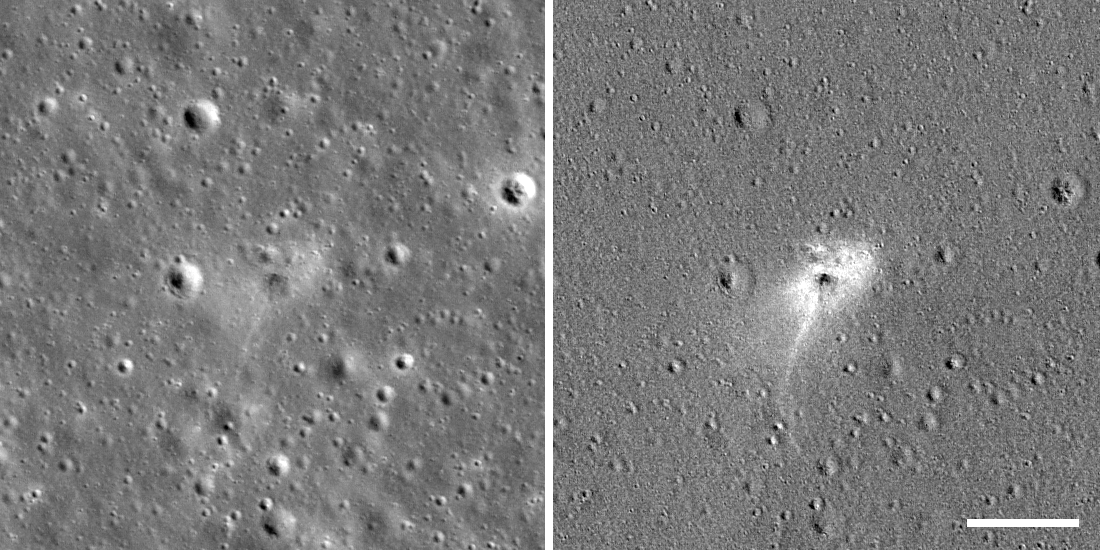
SpaceIL, an Israeli non-profit organization, is dedicated to landing the first Israeli spacecraft on the Moon. Beresheet was their first attempt at meeting this goal. While the spacecraft did land, it first touched the surface about 1000 meters per second faster than intended. The mishap occurred late in the descent profile when the main engine failed – resulting in a very low-angle (<10°), high-speed impact.

The Beresheet impact occurred on 11 April 2019 and LRO passed overhead 11 days later, allowing LROC to acquire a six-image (three NAC left-right pairs) sequence of the search area. The coordinates of the darkest pixel (lowest reflectance) of the central "smudge" are 32.5956°N, 19.3496°E, with a 20-m (latitude) by 8-m (longitude) 95% confidence interval, estimated from seven images acquired before the impact event (over the course of the LRO mission). The elevation is ~2613 meters, and although the uncertainty is not well constrained at this time, it is likely less than 10 meters.

Temporal ratio images enhance changes to the surface revealing subtle ejecta patterns. The point of impact is marked by a dark smudge about 10 meters across, where the surface reflectance was lowered by about 10%. At the scale of the NAC image we cannot detect a crater; perhaps there is one but it is simply too small to be seen, or the low angle of impact (less than ten degrees relative to the surface), the fragility of the spacecraft, and the velocity precluded crater formation (think gouge rather than crater). The smudge is likely a roughened surface (more micro-shadows) due to the impact and disintegration of the lander. Surrounding the smudge is an area of increased reflectance (up to 20% higher). This ragged zone spans 30 to 50 meters from the smudge and includes a ray that extends southward about 100 meters. The higher reflectance was likely caused by gases or very fine high-speed particles rapidly moving away from the impact site, which smoothed the upper layer of regolith and redistributed fine soil particles, which in turn increased reflectance.
While not a successful soft landing, the Beresheet impact provides another example of small impact events; the crash site can be compared to the two GRAIL and LADEE spacecraft that impacted the Moon in 2012 and 2014, respectively. The study of these impacts is giving us new insights into how the lunar regolith (soil) evolves over time.
Despite the mishap, it is important to remember that Beresheet was the first spacecraft developed and flown by a non-profit entity to orbit the Moon. And SpaceIL has announced they will be trying again, with Beresheet 2!
Related Featured Images
Topographic Map of the Chang'e 4 Site
Published by Mark Robinson on 15 May 2019